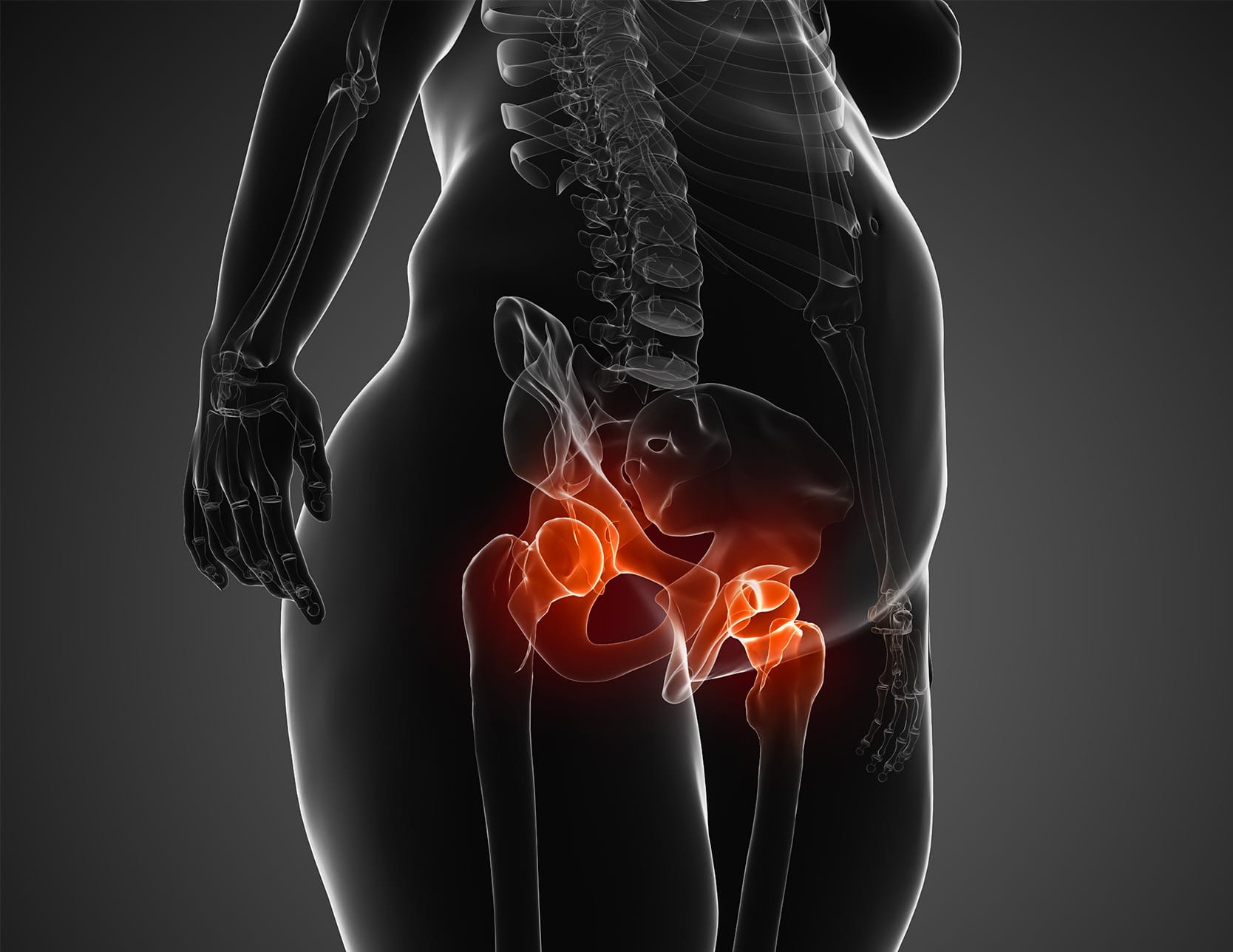Publié le 07 January 2022
I have a hip prosthesis, and I am obese. What advice can you provide ?
Epidemiology The disease of obesity has become a serious public health problem worldwide. It is considered to be a

Epidemiology
Obesity has become a serious global public health problem. It is considered an epidemic, as the situation has been deteriorating rapidly for several decades. The numbers change every year, but in 2021, there were nearly 2 billion overweight adults worldwide, with over 500 million classified as obese.
In France, 1 in 2 adults is overweight (BMI≥25), and nearly 16% (8 million people) are obese (BMI≥30). This means that two-thirds of the French population has a weight issue. The number of obese adults in France has doubled in the last 25 years. 12% of children and adolescents are obese, and 22% are overweight.
Overweight and hip osteoarthritis (coxarthrosis)
Overweight and obesity contribute to numerous medical risk factors. Concerning the hip, being overweight increases the risk of osteoarthritis. The hip’s cartilage is highly sensitive to pressure. Overweight (BMI>25) doubles the risk of coxarthrosis, while obesity (BMI>30) quadruples the risk!
Today, hip surgeons are implanting hip prostheses in increasingly younger patients. The causes are multifaceted, including excessive sports activities, bone deformities, as well as overweight and obesity.
Why is hip prosthesis surgery more difficult for surgeons when the patient is overweight or obese ?
Overweight and obesity complicate hip surgery. The hip joint is the deepest in the human body. Accessing the joint is technically more challenging because it requires traversing a thicker layer of fatty tissue, sometimes up to 15 to 20 centimeters. The increased depth of the hip erases the usual bony landmarks, making it more challenging to find the ideal implant positioning. Additionally, the mechanical risk (such as a crack or fracture) during the surgery increases.
However, complications mainly occur after the total hip prosthesis surgery (surgical site infection, thrombosis or pulmonary embolism, hematoma, respiratory issues, prosthesis dislocation, etc.).
Overweight and obesity are not contraindications for hip prosthesis, but it’s important to understand that the risk of complications is higher than in the general population. When the indication for a total hip prosthesis is established, it’s advisable to consider this procedure as a surgical project. Weight loss before the surgery can significantly reduce the operative risks, alleviate pain, and promote post-operative recovery. Implanting a total hip prosthesis in a well-prepared obese patient contributes to overall patient well-being.
Focus on the risk of hip prosthesis infection when obese
The main risk is infection of the hip prosthesis, and this risk increases with weight.
- Starting from a BMI >30 (obesity), the risk is doubled.
- Starting from a BMI >35 (severe obesity), the risk is multiplied by 3 to 6.
- Starting from a BMI >40, the risk is multiplied by 10.
Moreover, overweight or obese patients may have other comorbidities that further increase the risk of infection, especially diabetes and malnutrition.
After hip prosthesis surgery
It’s essential to preserve your new joint to ensure the best daily results, quality of life, and the longest lifespan for the hip prosthesis.
It is strongly recommended to continue appropriate physical activity, try to maintain or even reduce your weight. The assistance of a dietitian or nutritionist can be valuable in achieving a balanced diet. Ultimately, hip prosthesis surgery presents an opportunity to modify your lifestyle for a healthier and more balanced hygiene.
Results after hip prosthesis in obese patients
After the natural healing period and functional recovery, the results are quite satisfactory, although they may be lower compared to a patient with normal weight.
How to prepare for hip prosthesis when overweight or obese ?
Preparing for hip surgery when overweight or obese involves daily effort. Indeed, transforming your lifestyle through changes in diet and the gradual resumption of physical activity requires a high level of motivation.
Experience shows that it is preferable to lose weight before any surgery. In fact, fewer than 10% of obese patients who undergo hip prosthesis surgery will lose more than 5% of their weight. Paradoxically, one in four patients will continue to gain weight after hip prosthesis surgery.
If the level of disability related to hip osteoarthritis is still tolerable, it can be beneficial to seek the opinion of a surgeon specializing in obesity (bariatric surgery). The goal is to treat obesity before considering hip prosthesis implantation. Your surgeon can advise you on this matter. It is considered that a weight loss of 10% can have a significant impact on hip pain.
In conclusion, although total hip prosthesis surgery is a standard and common procedure, some cases remain complex. Implanting hip prostheses in obese patients is a medical-surgical challenge that requires preoperative medical preparation, optimization of surgical techniques (muscle-preserving surgery, 3D planning, and custom implants), along with rigorous post-operative follow-up.